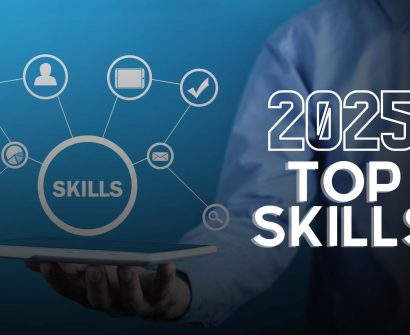Currently Empty: 0.00৳

Choosing the right skill to learn is one of the most important decisions you can make in your personal and professional journey. With thousands of career paths and an endless list of online courses, tutorials, and workshops available today, it’s easy to feel overwhelmed. Should you learn to code? Dive into digital marketing? Master design or data analysis?
While every skill has its value, not every skill is right for you.
This blog will guide you through a structured approach to identifying the right skill based on your personality, goals, interests, and market demand. By the end of this post, you’ll have the clarity and confidence to choose a skill that suits your future.
Why Choosing the Right Skill Matters
Learning a skill requires time, effort, and sometimes money. If you choose something that doesn’t match your interests or goals, you risk:
- Losing motivation halfway through
- Wasting time on something you’ll never use
- Missing opportunities in areas you would actually enjoy and thrive in
On the other hand, choosing the right skill can:
- Lead to job offers or freelance clients
- Boost your confidence and sense of direction
- Open up long-term career paths aligned with your personality
Step 1: Understand Your Interests and Strengths
Start by reflecting on who you are. What are you naturally drawn to? What do you enjoy doing, even when you’re not being paid for it?
Ask yourself:
- What kind of tasks do I enjoy—creative, analytical, hands-on, communicative?
- Do I like working with numbers, visuals, people, or ideas?
- Do I prefer working on a computer, outdoors, with tools, or in a team?
You can also look at your hobbies or past experiences. For example:
- If you enjoy writing, you might consider blogging, content creation, or copywriting.
- If you love solving puzzles or math, you might enjoy coding or data analysis.
- If you’re creative and visual, graphic design or video editing might be your thing.
- If you like persuasion or communication, digital marketing or sales might suit you.
Take a career personality quiz (such as 16Personalities or Myers-Briggs) to help you better understand your work style.
Step 2: Define Your Goals and Values
Not everyone is aiming for the same kind of success. What are your long-term goals?
Here are a few possibilities:
- Earn money quickly through freelancing
- Get a remote job at an international company
- Build your own business
- Work in a creative field
- Make a social or environmental impact
- Secure a high-paying, stable job
Also consider your values:
- Do you value flexibility over structure?
- Are you willing to work alone, or do you prefer teams?
- Do you prioritize money, passion, purpose—or all three?
For example:
- If you want freedom and flexibility, freelancing skills like design or content writing may work.
- If you value stability and high income, you might focus on tech roles like software engineering or cloud computing.
- If you care about helping others, you might look into teaching, psychology, or social entrepreneurship.
Your goals and values should align with the skill you choose to invest in.
Step 3: Research the Market Demand
Interest alone is not enough—you also need to ensure the skill is in demand.
You can do this by:
- Checking job boards like LinkedIn, Glassdoor, or bdjobs.com
- Exploring freelancing platforms like Fiverr, Upwork, and PeoplePerHour
- Reviewing industry reports and future job trends (look at WEF’s Future of Jobs report)
- Talking to professionals in your network
Look for:
- Which roles are being advertised repeatedly
- Salary trends and growth potential
- Entry-level opportunities
- Long-term demand across different regions
For example, if you’re in Bangladesh and you love tech, you’ll see a strong local and global demand for:
- Web development
- UI/UX design
- SEO and digital marketing
- Data analytics
- Cybersecurity
Balancing your interest with job demand is crucial.
Step 4: Try Before You Commit
You don’t need to jump in headfirst. Try out a few beginner projects or mini-courses before fully committing to a skill.
Here’s how:
- Take free introductory courses on platforms like Coursera, YouTube, or freeCodeCamp
- Follow tutorials or create a small project (e.g., design a logo, build a simple website)
- Volunteer your skills in small ways—help a friend, build something for your school or community
- Intern or shadow a professional for a day if possible
This hands-on experience will give you a realistic idea of whether you enjoy the work and whether you’re good at it.
Often, the best way to find out if a skill is right for you is to start doing it.
Step 5: Evaluate the Learning Curve
Some skills are easier to pick up and start earning from quickly, while others require months or even years of practice.
For example:
- You can start freelancing in social media management or content writing within 2-3 months.
- It might take 6-12 months to become job-ready in full-stack web development or data science.
- AI or blockchain development may require deep understanding and take over a year to learn well.
Be realistic about how much time you can invest. Do you have a few hours a week, or are you looking to make a full-time shift?
Choose a skill whose learning path fits your current lifestyle and urgency.
Step 6: Consider How the Skill Can Grow with You
You don’t want to pick a dead-end skill.
Ask:
- Can this skill evolve with the market?
- Can I combine it with other skills?
- Will it still be useful in 5–10 years?
A great skill will open doors to other fields. For example:
- Coding can lead to product management, entrepreneurship, or AI.
- Graphic design can grow into branding, animation, or UI/UX.
- Content writing can branch into marketing, editing, or public relations.
Think long-term, not just short-term benefits.
Step 7: Talk to People in the Field
Reach out to people who already use the skill professionally. Ask them:
- What’s their daily work like?
- What challenges do they face?
- What tools or platforms are most important?
- What’s the realistic earning potential?
This real-world perspective can help you avoid common mistakes and get a sense of what success looks like in that field.
You can find these professionals through LinkedIn, Facebook groups, or even YouTube channels.
Final Thoughts: Your Skill Is Your Superpower
Choosing the right skill is not about following the crowd or copying others. It’s about aligning your strengths, interests, goals, and market realities.
There’s no one “best” skill—there’s only the best skill for you.
So, take your time, explore, reflect, and experiment. Don’t rush the decision—but don’t stay stuck in confusion either. The sooner you choose and commit, the faster you’ll start gaining experience, building confidence, and creating opportunities.
Your career doesn’t need a perfect plan—it needs a skill you love, a market that values it, and the courage to get started.




